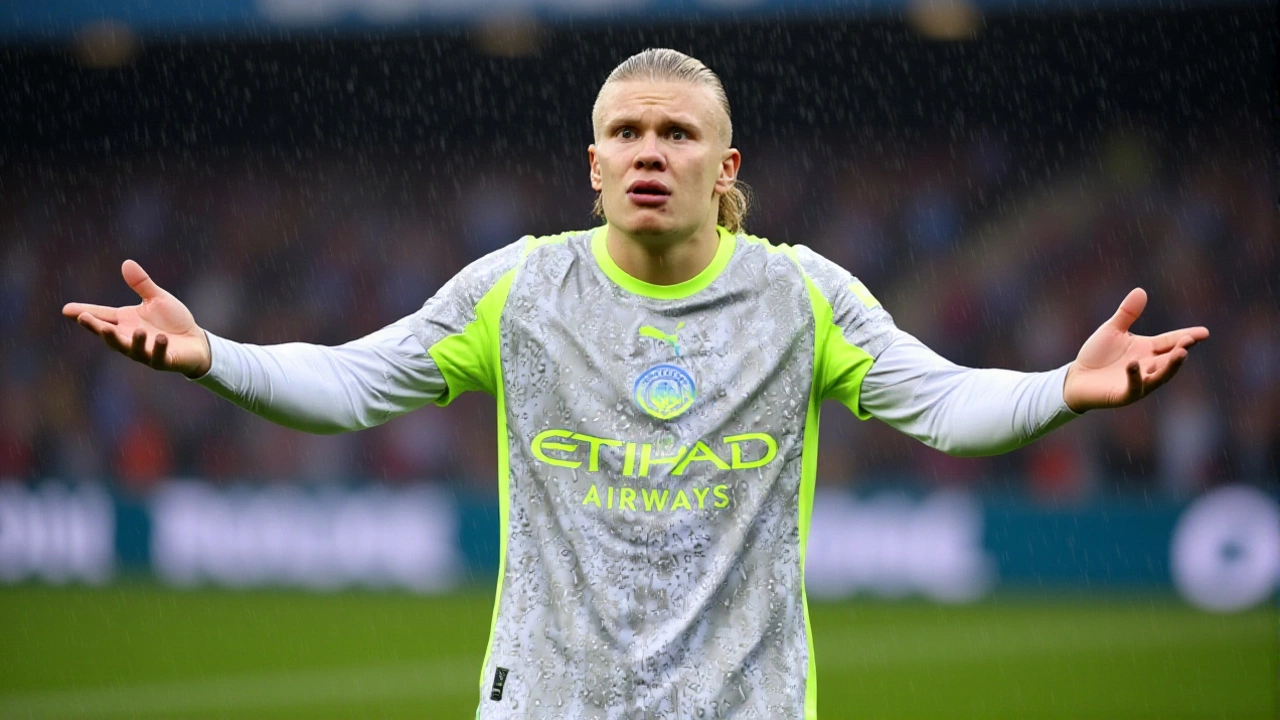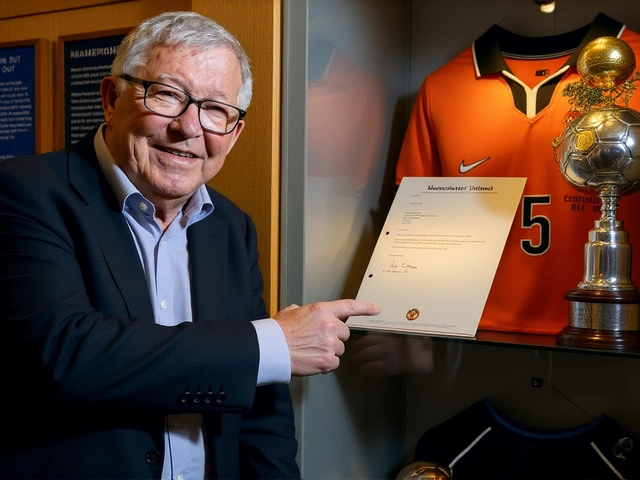When Manchester City took the field against Swansea City on Wednesday, October 29, 2025, the absence of Erling Haaland wasn’t just noticeable—it was seismic. The 24-year-old Norwegian striker, who had scored 14 goals in his first 10 matches of the 2025-2026 season, sat out the EFL Cup clash after sustaining a shin injury during their 5-1 win over Burnley on Saturday, October 25. The decision to bench him came just hours before kickoff, confirmed by manager Pep Guardiola with a quiet, telling phrase: "Erling, I didn't see..."—a line that spoke volumes about the uncertainty surrounding his star forward’s condition.
The Injury Timeline: From Burnley to Bench
Haaland’s discomfort began in the 65th minute of the Burnley match at Etihad Stadium, Manchester. He limped slightly but finished the game, only to be subbed off in the 72nd. Medical scans on Sunday and Monday revealed inflammation in the anterior tibialis region, requiring 72 to 96 hours of rest. That window closed just before Wednesday’s 7:45 PM GMT kick-off against Swansea. Manchester City’s medical team, led by Chief Medical Officer Dino Galvani, opted for caution over risk. No MRI was publicly released, and no official recovery timeline was given—only that assessments would continue through Thursday and Friday for potential inclusion in the November 2 fixture against Fulham.Who Stepped Up? Marmoush, Cherki, and Doku
Without Haaland, Guardiola turned to three young talents. Omar Marmoush, the 25-year-old Egyptian striker, started up front. Rayan Cherki, the 21-year-old French playmaker, operated behind him, while Jeremy Doku, the 22-year-old Belgian winger, was deployed on the left. Their collective performance was more than just competent—it was a statement. Doku, who had already recorded one assist, three shots on target, five crosses (two accurate), and three key chances against Burnley, was a constant threat. Marmoush, as The Telegraph put it, "shows Erling Haaland he can help shoulder Manchester City’s goal-scoring burden." That line wasn’t just journalism—it was a quiet challenge to the world’s most lethal striker.Why This Matters Beyond One Match
This wasn’t just about replacing a goalscorer. It was about testing the depth of a squad that carries a £1.02 billion valuation. Haaland averages 1.4 goals per 90 minutes this season. Losing him—even temporarily—exposes a reliance that’s become dangerous. Manchester City had already played three games in eight days. The schedule doesn’t ease: Fulham on November 2, then Tottenham Hotspur on November 5. Every minute matters. Guardiola’s decision to rest Haaland wasn’t just medical—it was strategic. He’s not just protecting a player. He’s protecting a title defense.The Bigger Picture: EFL Cup and Squad Rotation
The EFL Cup, run by the English Football League in Preston, is often treated as a secondary competition. But for clubs like Manchester City, it’s a chance to rotate, test youth, and maintain rhythm during congested periods. Swansea, competing in the EFL Championship, entered as underdogs. But they weren’t there to make up numbers. Their fans knew this was a rare chance to face the reigning Premier League champions—and they showed up. The result? A 3-0 win for City, with Marmoush scoring the opener and Doku assisting the second. The performance didn’t just fill the void—it hinted at a future where Haaland’s dominance isn’t the only path to victory.What’s Next? The November Crucible
Guardiola hasn’t ruled Haaland out for Fulham on November 2. But he hasn’t ruled him in, either. The next 48 hours—Thursday and Friday—are critical. If swelling returns, he’ll miss at least the next two league games. That would mean missing 180 minutes of top-flight action for the first time since last December. For a player who’s played every 90 minutes in 10 consecutive matches, this is uncharted territory. And for Manchester City, it’s a test of resilience. Can they keep winning without their most lethal weapon? Marmoush’s goal against Swansea suggests yes. But the real answer won’t come until November 2.Frequently Asked Questions
How serious is Erling Haaland’s shin injury?
The injury is classified as inflammation in the shin, likely involving the anterior tibialis muscle or surrounding tissue. While not a fracture or ligament tear, it requires 72–96 hours of rest to prevent aggravation. No MRI was released, but the decision to rest him for a midweek cup game—rather than risk it—suggests the club is being cautious. He’s expected to be re-evaluated by Friday, November 1, ahead of the Fulham match.
Who is Omar Marmoush, and why is he being talked about so much?
Marmoush is a 25-year-old Egyptian international striker signed from Wolfsburg in 2024. He’s been a backup to Haaland but showed composure and clinical finishing in the 3-0 win over Swansea, scoring the opening goal. His performance, combined with his work rate and positioning, has drawn comparisons to Haaland’s early days at City. The Telegraph’s headline—"shows Erling Haaland he can help shoulder Manchester City’s goal-scoring burden"—isn’t just hype; it’s a sign that Guardiola sees him as a viable long-term option.
Could Haaland miss the Fulham and Tottenham matches?
It’s possible. If inflammation persists after Friday’s re-evaluation, he’ll likely be rested for both matches to ensure he’s fully fit for the Champions League knockout phase in December. Missing two Premier League games would be his longest absence since joining City in 2022. Guardiola has never prioritized a cup match over league form—so if Haaland’s not 100%, he won’t play.
Why did Guardiola wait until the last minute to confirm Haaland’s absence?
It’s standard protocol for elite clubs to monitor injuries up until the final team sheet deadline. Haaland’s condition improved slightly on Tuesday, creating uncertainty. Guardiola likely wanted to give him every chance to train on Wednesday morning. When he didn’t respond to light drills, the decision was made. This approach avoids unnecessary panic and keeps opponents guessing—especially in cup football.
What does this mean for Manchester City’s title chances?
It’s a stress test. Haaland has been the primary source of 42% of City’s goals this season. His absence forces other players to step up—and if Marmoush, Cherki, and Doku can maintain this level, City’s attack becomes more unpredictable. But if they falter, especially in tight league games against Spurs or Arsenal, the lack of a clinical finisher could cost them points. The title race isn’t over, but it just got more complicated.
Is this injury related to Haaland’s previous issues?
No direct link. Haaland has had minor hamstring strains in the past, but this is his first shin issue since joining City. His workload this season—averaging 87 minutes per game across all competitions—is the highest of his career. The club’s medical staff has been managing his minutes closely, but the condensed schedule in October may have pushed him beyond his limits. Rest, not surgery, is the solution.



